If you've ever felt like you've never seen someone like you represented in a place in society, you'll know how good it feels to see a person or a symbol that reflects that representation back at you.
Displaying LGBTQ+ symbols at our campuses - which acts as both a place of work and a home for members of our community - is an important way to recognise the hardships marginalised members of our community face, and that they have a rightful place as members of the wider University community.
The LGBTQ+ Staff Network have developed Rainbow lanyards for Staff, Students and Student Ambassadors that are available at our Canterbury and Medway sites. These lanyards are based on the Inclusion Flag, and include not only the colours of the traditional rainbow Gay Pride Flag, but also the Monica Helms Transgender Pride Flag colours and the 2017 Philadelphia Pride Flag. This demonstrates the commitment at Kent as an Institution to ensure that all members of our LGBTQ+ community are supported, and to wear the Kent LGBTQ+ lanyard demonstrates your personal commitment to supporting our staff and students, either as a fellow member of the LGBTQ+ community, or as an Ally. By wearing this lanyard, you can show your solidarity with LGBTQ+ people and the struggles faced by them. It says that you welcome everyone to the Kent community, regardless of their gender identity or their sexual orientation.
The Rainbow as a symbol of Pride dates back to 1978 when the artist Gilbert Baker, an openly gay man and drag queen, designed the first Rainbow Flag as a symbol of Pride. Baker later revealed that he was urged by Harvey Milk, one of the first openly gay elected officials in the U.S., to create a symbol of pride for the gay community. Baker decided to make that symbol a flag because he saw flags as the most powerful symbol of pride. Baker saw the rainbow as a natural flag from the sky, so he adopted eight colours for the stripes, each colour with its own meaning (hot pink for sex, red for life, orange for healing, yellow for sunlight, green for nature, turquoise for art, indigo for harmony, and violet for spirit).
The Transgender Pride Flag is a light blue, pink and white striped flag, designed by American trans woman Monica Helms in 1999 and has become a global symbol of the transgender community, organisations and individuals. The flag's design represents the transgender community, and consists of five horizontal stripes: two light blue, two pink, and one white in the centre. Helms describes the meaning of the transgender pride flag as follows: "The stripes at the top and bottom are light blue, the traditional colour for baby boys. The stripes next to them are pink, the traditional colour for baby girls. The stripe in the middle is white, for those who are transitioning or consider themselves having a neutral or undefined gender."
In 2017, Philadelphia took a further step toward LGBTQ+ representation with the introduction of the Philly Pride flag, The Philly Pride flag adds two new stripes — brown and black — to the top of the rainbow. It was born through a need to challenge racism within LGBTQ+ communities and a desire for more representation for intersectionality. On the Philly Pride flag, the black and brown stripes represents the Black and Latino communities.
Raising Pride flags on our buildings and wearing Pride symbols around our necks may seem trivial, but this is an important way for the Institution, and you, to remind LGBTQ+ people that they are welcome here.
You can collect a staff or student lanyard from most College and Library reception desks in Canterbury or Medway or email us.
A positive step you can take in your Allyship journey is completing the We Stand With You questionnaire
The meaning of the Rainbow
The colours and layout of the various flags of the LGBTQ+ community have significance and meaning.
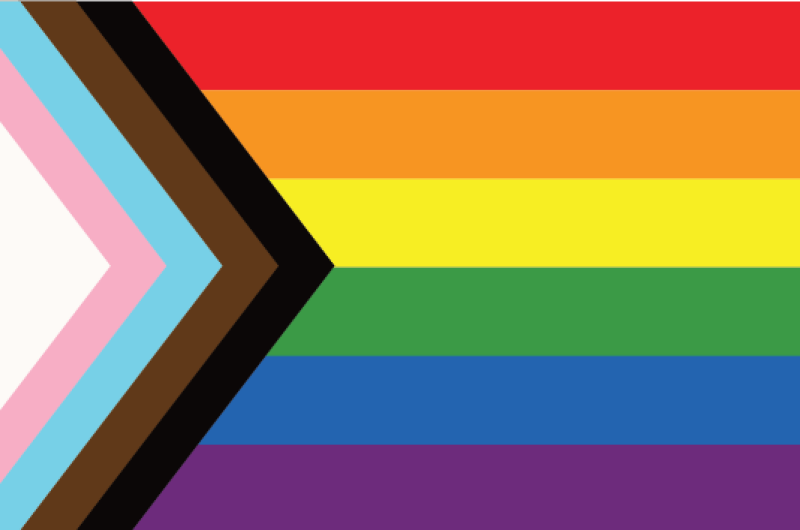
Also known as the Inclusion Flag, this is a rebooted Pride Flag by Daniel Quasar. Representation matters — especially for the most marginalised communities. The reboot is meant to be inclusive of queer people of colour and trans people.
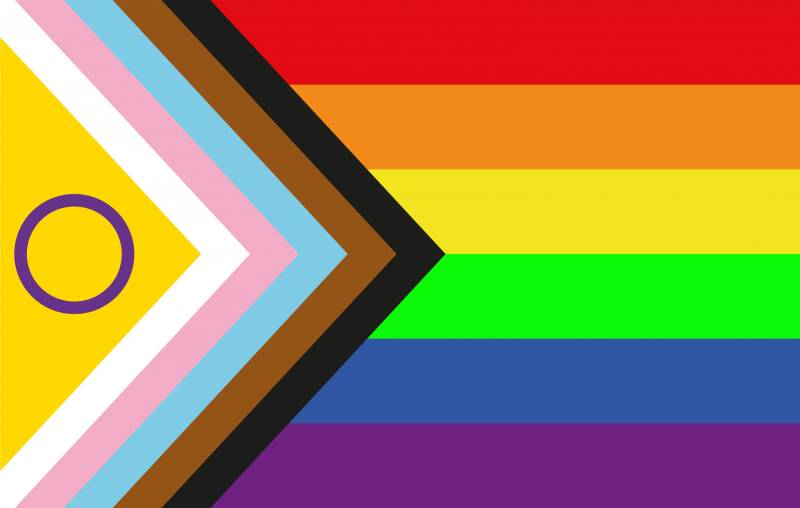
In 2021, Valentino Vecchietti of Intersex Equality Rights UK adapted the Pride Progress flag design to incorporate the intersex flag, creating this Intersex-Inclusive Pride Flag
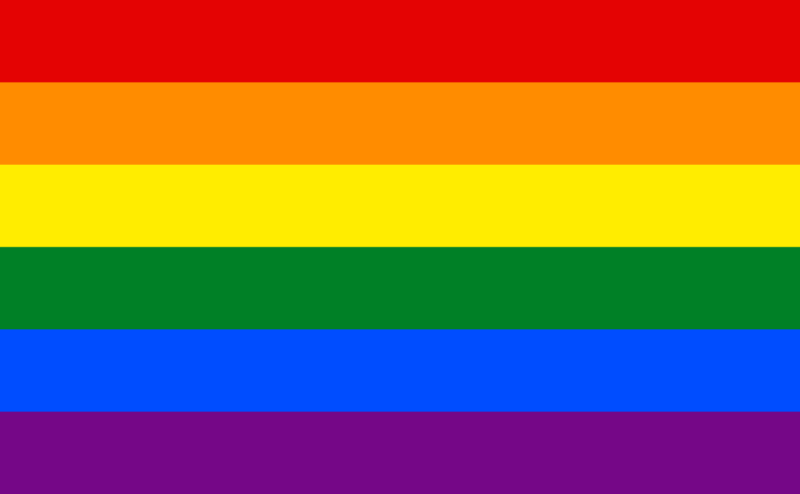
The six-stripe Gay Pride or Rainbow Flag was created in 1979 for practical reasons when printers were unable to process the hot pink and turquoise. It is now the most globally recognised symbol of Pride.
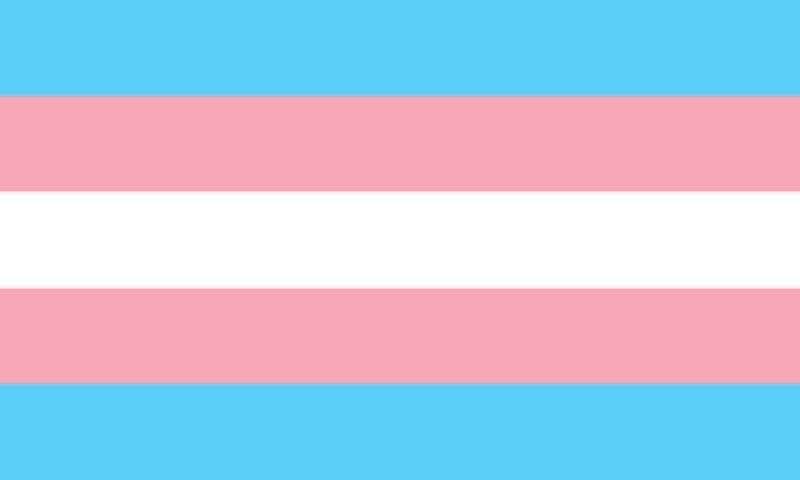
The most famous of all the transgender flags is the Monica Helms Transgender Pride flag created in 1999 and first flown at a parade in Phoenix in 2000. The blue represents males, the pink females and the white for those who are transitioning or have a neutral or undefined gender.
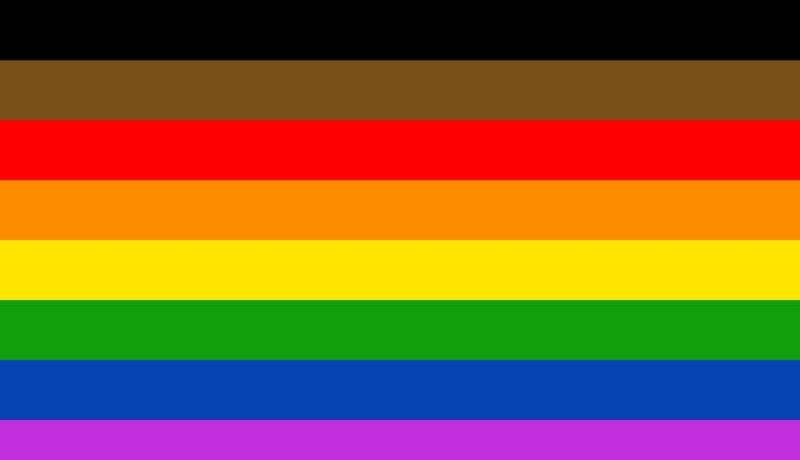
In 2017 a new flag was unveiled at Pride in Philadelphia which included black and brown stripes, demonstrating the importance of people of colour within the LGBTQ+ community
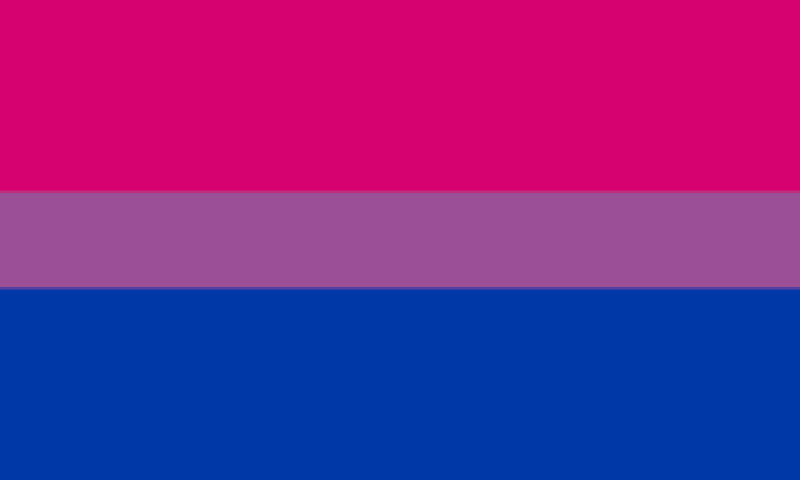
First unveiled in 1998, the Bisexual Pride Flag was designed by Michael Page. This flag consists of magenta representing same-gender attraction, blue representing opposite gender attractions and a deep lavender band representing attraction toward both genders.

The Pansexual Pride Flag holds the colours pink, yellow and blue. The pink band symbolizes women, the blue men, and the yellow those of a non-binary gender, such as a gender bigender or gender fluid

The Asexual Flag was released in 2010. The black stripe represents asexuality, the grey stripe is between sexual and asexual, the white stripe sexuality, and the purple stripe community
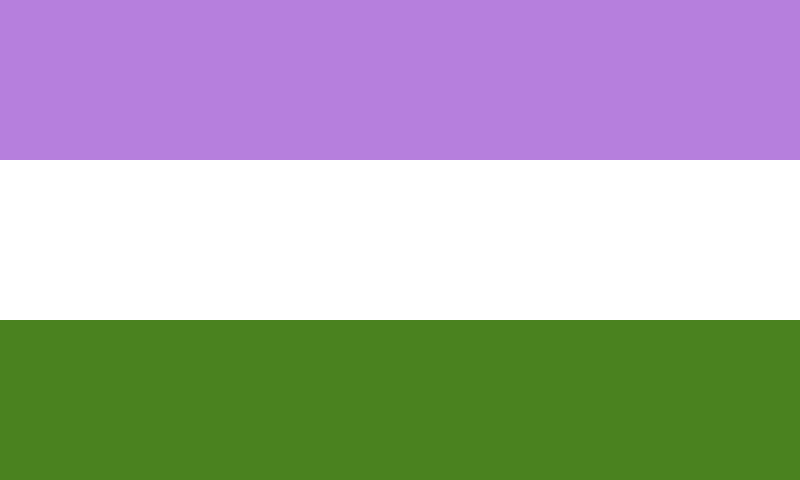
The Genderqueer Pride Flag consists of a lavender stripe representing androgyny and queer identity. The white stripe represents agender or gender neutral. The dark green, as the inverse of lavender, represents third gender identities and all those who identity off the traditional gender spectrum.
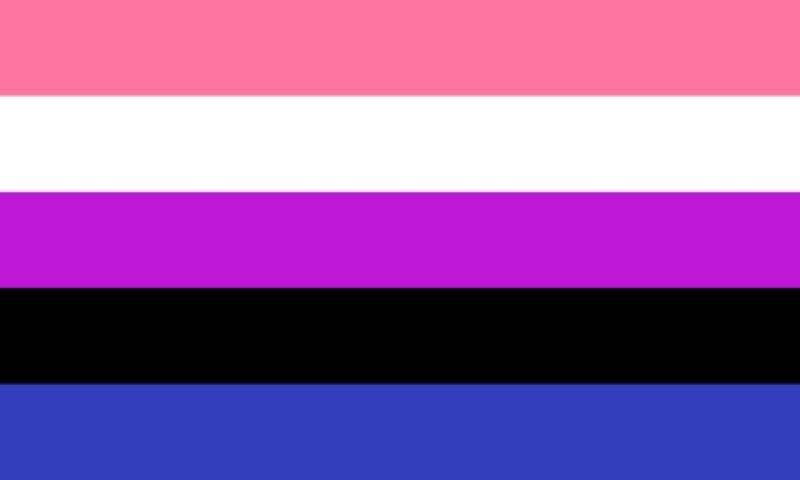
The Gender Fluid Flag represents the fluctuations and flexibility of gender in gender fluid people. Pink for femininity. White for lack of gender. Purple for a combination of masculinity and femininity, including androgyny. Black for all other genders (including third and pan). Blue for masculinity.
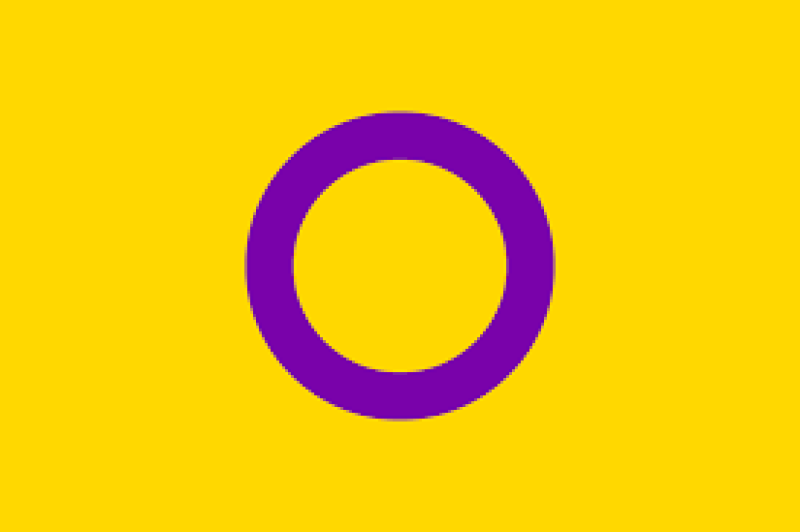
The Intersex Pride Flag was created in 2013 by Oll Australia. It features yellow and purple, which are considered “hermaphrodite” colours. The purple central circle is unbroken and unornamented, symbolising wholeness and completeness, and potentialities.
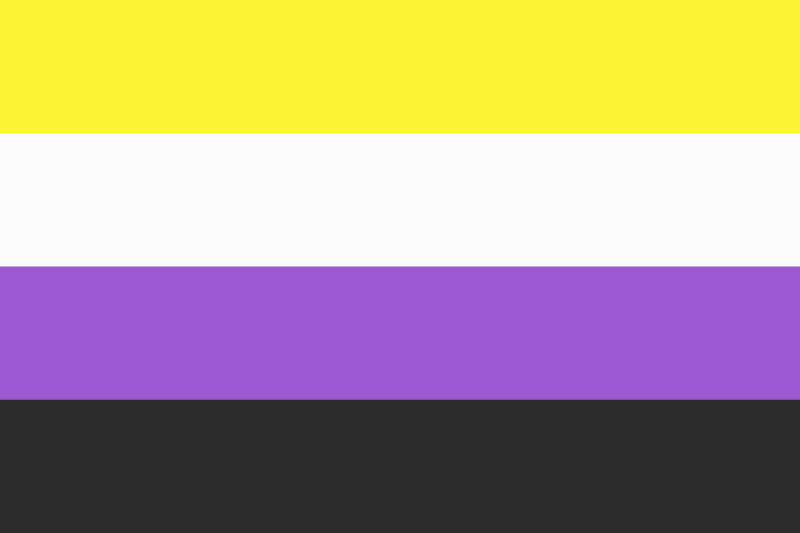
The Nonbinary Flag was created in 2014 by Kye Rowan for people not represented by the genderqueer flag. Yellow for people whose gender is outside of the binary, white for people with many or all genders, purple for people with genders a mix of male and female, and black for people with no gender
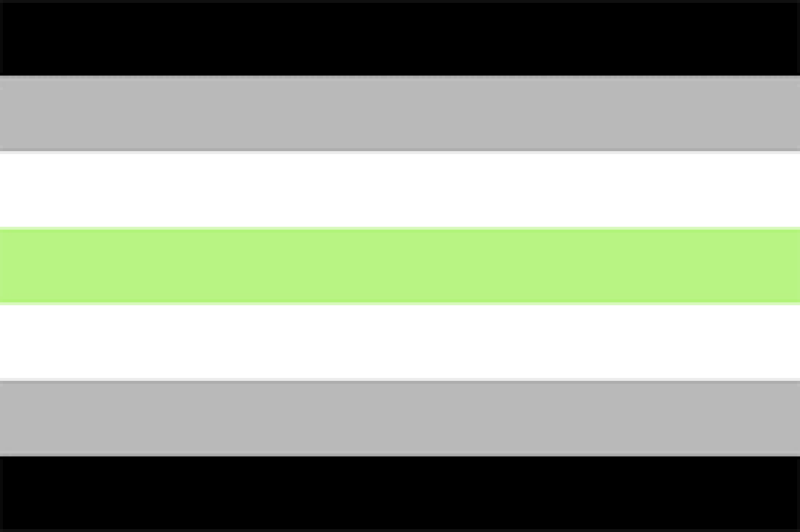
The Agender Pride Flag, created by Salem X in 2014, has seven horizontal stripes. The black and white stripes represent an absence of gender, the gray represents semi-genderlessness, and the central green stripe represents nonbinary gender
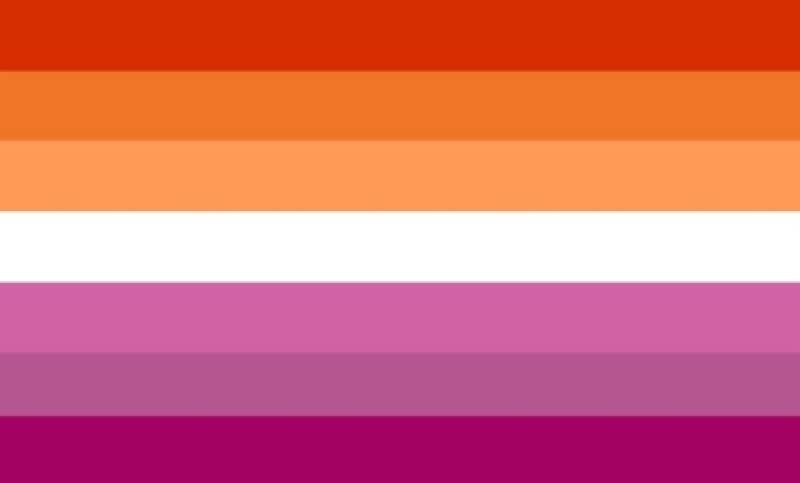
The original Lesbian Pride Flag was a red kiss superimposed on six shades of red and pink colours. A white bar in the centre was introduced in a weblog in 2010. It was modified by removing the kiss. In a 2018 article on Medium, an author proposed this flag as 'A Lesbian Flag for Everyone'




